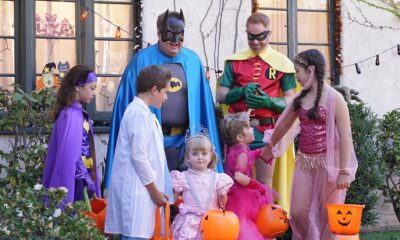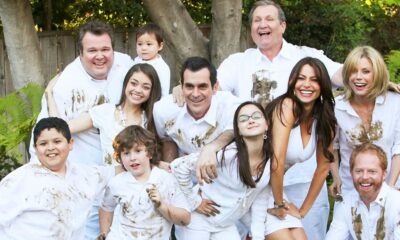HEALTH
Learn CPR and AED: Complete Certification for Life-Saving Skills

When a person’s heart stops or they stop breathing, every second matters. Quick action from someone nearby can decide if they survive. Many people think they need to be medical professionals to help in these moments, but that is not true. Anyone can learn simple skills that save lives. Understanding how to respond, even before emergency teams arrive, can make a powerful difference in an emergency. Choosing to learn CPR and AED gives you the confidence to act when a real crisis happens.
This guide explains why CPR and AED training is so important, what you will learn, and how these skills prepare you to help family, friends, coworkers, or even strangers.
Why Learning These Skills Matters
Cardiac arrest can happen anywhere. It can happen at home, at work, or in a public place. When it happens, the person is not breathing normally and their heart is not pumping blood. Without fast care, the brain and other vital organs start to fail.
Getting trained helps you:
- Stay calm during emergencies
- Know the correct steps to follow
- Use an AED safely
- Increase a person’s chance of survival
- Support others until medical teams arrive
When you decide to learn CPR and AED, you gain skills that stay with you for life and prepare you to step in with confidence.
Understanding What Happens in Cardiac Arrest
A cardiac arrest is not the same as a heart attack. During cardiac arrest, the heart suddenly stops working. This means the body does not get the oxygen it needs. Breathing stops or becomes unusual, and the person becomes unresponsive.
If no one takes action:
- The brain starts to suffer damage
- The person loses oxygen
- Survival becomes less likely with each passing minute
CPR helps keep blood moving, and an AED can restore a normal heart rhythm. This is why knowing these skills is so valuable. Your training helps fill the gap before professionals take over.
What CPR Helps You Do
CPR stands for cardiopulmonary resuscitation. It is a simple method that uses chest compressions to keep blood flowing. Even without breaths, chest compressions alone can extend the time a person has to survive.
CPR training teaches you:
- How to check for signs of life
- How to give safe and effective compressions
- How to use the correct hand position
- How to press at the right speed and depth
These steps can double or triple the chance of survival when done early. You do not need special equipment to begin CPR. Your hands are the most important tool you have.
What an AED Does and Why It Is Important
An AED is a small device that checks the heart’s rhythm. If the rhythm is dangerous, the device gives an electric shock that can help restart the heart. AEDs are designed so that anyone can use them, even without medical training.
AED training helps you learn:
- How to turn the device on
- Where to place the pads
- How to follow the voice prompts
- When to stand back for safety
During training, you also learn how CPR and AED support each other. CPR helps keep blood flowing while the AED prepares the heart for a possible restart. Together, they give the person the best chance to recover.
Skills You Will Learn During Training
CPR and AED certification covers more than just chest compressions. You learn a full set of skills designed to help during many different emergencies.
You will learn:
- How to check if the scene is safe
- How to call for help
- How to assess breathing
- When to begin compressions
- How to support someone until help arrives
You also learn to care for adults, children, and babies. Every age group needs slightly different steps, and training helps you understand these differences.
How Training Helps You Become More Confident
Emergencies can be scary, even for strong and calm people. Many bystanders freeze because they are unsure what to do. Proper training helps remove fear and confusion. When you practice the steps during training, your actions become natural.
By choosing to learn CPR and AED, you prepare yourself to:
- Make quick decisions
- Take safe and clear actions
- Stay focused under pressure
- Lead others during emergencies
Confidence can save lives. When you feel ready, you are more likely to help right away.
Who Should Take CPR and AED Training
These skills are helpful for everyone, not only people in certain careers. Anyone can face a situation where a loved one or community member collapses.
Training is especially helpful for:
- Parents and caregivers
- Teachers and school staff
- Coaches and sports leaders
- Workers in offices and public spaces
- Babysitters and nannies
- Lifeguards
- Construction and warehouse workers
- Fitness trainers
Many workplaces also require certification to keep employees safe. Even if it is not required for your job, it is a powerful skill to have.
How CPR and AED Training Saves Lives in Real Situations
Many survival stories come from everyday people who acted fast. Some were shopping. Some were at home. Some were driving. They stepped in because they had learned the steps and felt ready.
In most cases of cardiac arrest:
- A bystander begins CPR
- Someone brings an AED
- Emergency teams arrive soon after
Without that first step from a trained person, the outcome could be very different. This is why communities that encourage CPR training see better survival rates.
How to Keep Your Skills Fresh
Learning the steps once is not enough. Skills can fade over time, especially if you do not use them often. Most experts recommend renewing your certification every couple of years.
You can stay ready by:
- Reviewing your notes
- Watching short practice videos
- Taking refresher courses
- Practicing compressions on a manikin if available
Renewing your commitment to learn CPR and AED helps you stay ready to protect others anytime.
Conclusion
CPR and AED skills are simple, powerful, and life saving. Anyone can learn them, and everyone should. Emergencies can happen in any place and at any time. Having the ability to act quickly can change someone’s future in just a few moments. When you understand how to help, you bring strength and safety to your home, workplace, and community.

-

 Cast6 months ago
Cast6 months agoRico Rodriguez
-

 Episode Guide6 months ago
Episode Guide6 months agoHalloween episodes
-

 Cast6 months ago
Cast6 months agoCast
-

 Guest Star6 months ago
Guest Star6 months agoValentine’s Day episodes
-

 Cast6 months ago
Cast6 months agoWho is your favourite character?
-

 Cast6 months ago
Cast6 months agoSarah Hyland
-

 Episode Guide6 months ago
Episode Guide6 months agoEpisode Guide : Season 1
-

 Guest Star6 months ago
Guest Star6 months agoGuest Star: Khamani Griffin